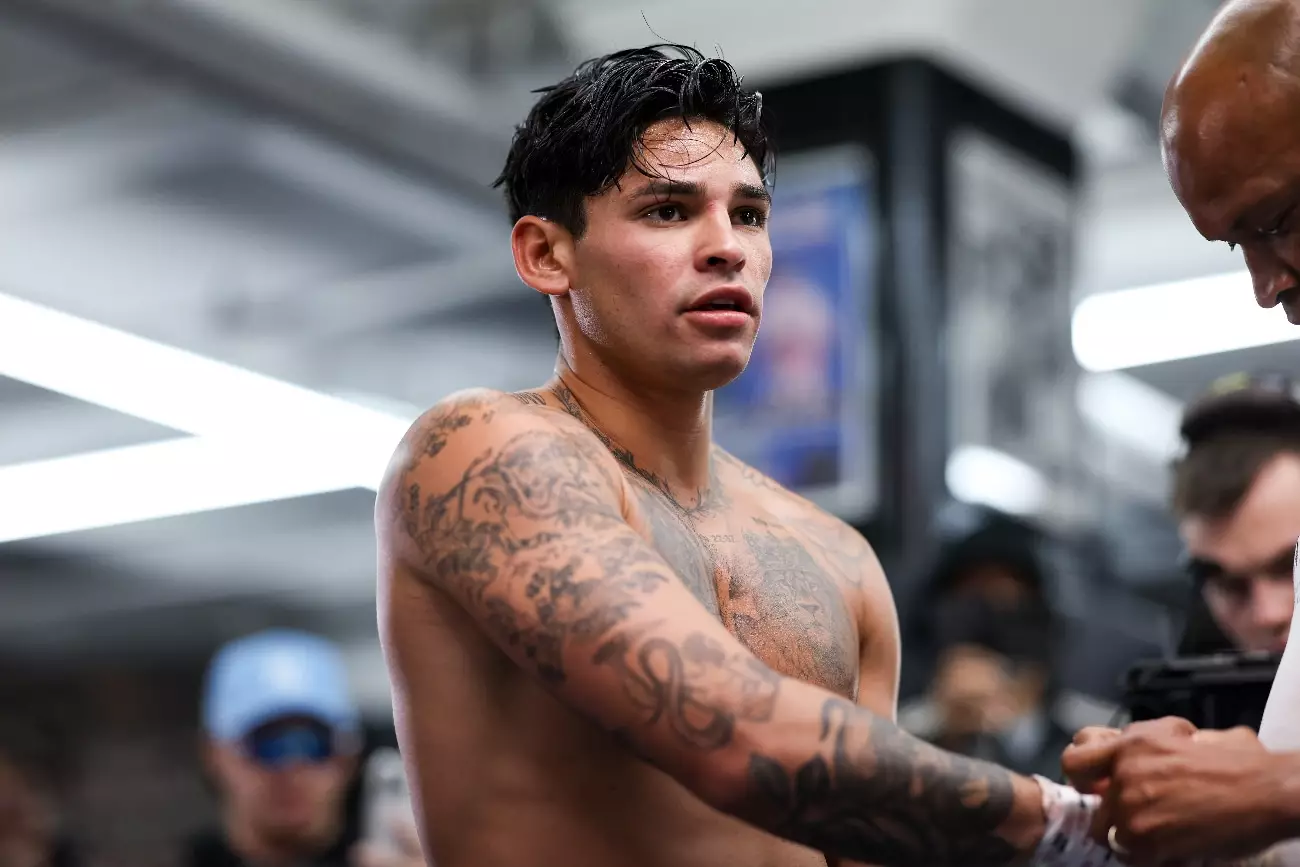In the world of boxing, anticipation is often as vital as the punches thrown in the ring. The upcoming May event featuring Ryan Garcia against Rolando “Rolly” Romero, Devin Haney facing off against Jose Ramirez, and Martin Bakole battling Efe Ajagba brings a compelling narrative to the forefront. Linked together under the auspices of Turki Al-Sheikh, this triple-header promises to attract attention. However, the matchups prompt scrutiny, particularly regarding the choices of opponents and the tactical implications that may ripple through their respective careers.
The Matchup Dynamics
Ryan Garcia, endowed with the skills and charisma of a burgeoning star, has opted to face Romero (record: 16-2, 13 KOs), raising eyebrows in the boxing community. Traditionally viewed as a stepping stone, Romero’s mediocre performances, illustrated by a shaky 2-2 record in his last four contests, make him a less-than-ideal challenger for Garcia (record: 24-1, 20 KOs). This decision appears to prioritize risk mitigation over competitive spirit, especially considering Garcia’s year-long hiatus due to suspension. Opponents like Isaac “Pitbull” Cruz would have posed a far greater challenge, testing the mettle of Garcia as he returns to the ring.
In parallel, Devin Haney’s bout against Jose Ramirez (record: 29-2, 18 KOs) carries its own weight of significance. While Haney is a prominent figure in boxing, the choice of Ramirez, a skilled and dangerous contender, poses genuine risks. Should the aim be for both Garcia and Haney to emerge victorious ahead of their scheduled rematch in October in Riyadh, a less formidable opponent for Haney would seem judicious. The contrast in their fight choices may serve to underline differing strategic approaches taken by the fighters and their teams.
Entertainment Value vs. Athletic Integrity
One cannot dismiss the entertainment aspect of the event, particularly the inclusion of Romero, who has established a reputation for his trash-talking persona. His antics often bring levity to the more serious nature of competitive boxing, making him an appealing figure for casual fans. However, the underlying question remains: Does the inclusion of a less skilled fighter like Rolly compromise the integrity of the event? While boxing is ultimately about spectacle and fan engagement, the sport’s credibility could be jeopardized through mismatches that diminish the competitive essence of the ring.
Moreover, criticism from boxing purists regarding Garcia’s choice to fight Romero reflects a larger concern about fighters prioritizing fame and hype over rigorous competition. As fans express discontent over the seeming predictability of fighters’ choices, it raises an essential dialogue about the responsibilities of athletes who shape the landscape of the sport.
As the May event approaches, the contrasting dynamics of the matchups pose significant questions for the future trajectory of these fighters. Garcia’s safety-first approach to selecting Romero juxtaposed with Haney’s more combative path against Ramirez sets a stage for examination of strategy in modern boxing. While entertainment remains crucial, the heart of boxing lies in its competition and the fierce spirit that drives it. The ring welcomes all with the promise of excitement and unpredictability, yet it must also uphold the sport’s standards of excellence and athletic integrity. As these three matched fighters step into the spotlight, how they navigate this delicate balance will undoubtedly shape their legacies within the sport.

